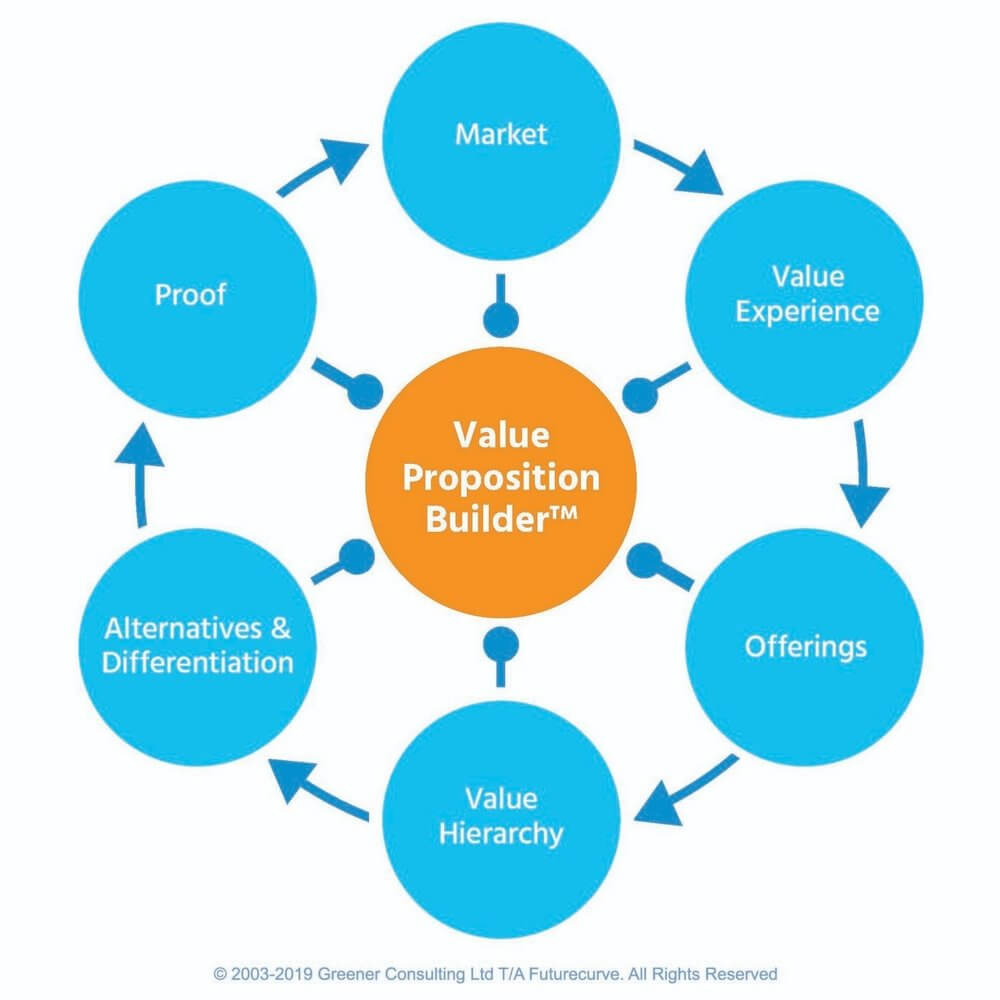If you had to entice a customer to buy your product using one sentence or less, what would you say? This is the question you should ask yourself when developing a value proposition. It can be difficult to narrow down your product’s value to 20-30 words. Luckily, there are numerous tools available that will take you through a step-by-step process of developing a value proposition. These tools can help you prioritize important information, organize your thoughts, and even bring you to a new perspective or idea that will enhance the way you communicate your product or service’s value to customers.
Here are a few tools to help you develop a strong B2B value proposition:
1. The B2B Elements of Value Pyramid
Bain & Company created a model that organizes valuable elements that B2B organizations can offer customers. The model’s roots can be traced back to Abraham Maslow’s hierarchy of needs from 1943, which argues humans are motivated by both basic and complex needs. However, this model focuses on people’s motivation for buying products or services. The elements at the bottom are easy to measure, such as acceptable price, while the elements at the top are more objective and difficult to quantify, such as reputational assurance.
According to leaders at Bain & Company, if companies use “modern survey techniques and statistical analysis to quantify all the elements on a consistent basis, they can learn what customers truly value and which aspects of an offering merit investment.” By surveying customers and asking them to rate the elements they value most, you can modify and improve your value proposition.

Source: Harvard Business Review
2. Strategyzer Value Proposition Canvas
Strategyzer, known for their business model platform, offers a canvas tool for companies to create value propositions. It’s composed of two sections, a customer profile and value map. The customer profile describes the jobs your customers try to get done (these can be functional, social, or emotional). In addition, this section highlights the pains customers experience when trying to get the job done and the gains they hope to achieve.
The value map lists the products and services your value proposition builds on. In this section, you should ask yourself, how does your product minimize or reduce pain points? How does it maximize outcomes/benefits? The best value propositions come from connecting your customer profile and value map. The customer profile may contain countless jobs, pains, and gains but the value map helps you highlight which ones to focus on.

Source: Strategyzer
3. Value Proposition Builder™ by Futurecurve
This trademarked tool is a product of Futurecurve’s research into human behavior. The six elements are part of an iterative process that leads to a customer-centric value proposition. The process is centered around identifying your target market and how your product or service provides value for that audience. However, this value is strengthened by determining which benefits are most important, how they offer differentiation, and proof to support your claims.
Futurecurve outlines a number of positive outcomes of undergoing this process to create a value proposition. To name a few, companies gain a clear profile of buyer personas, an understanding of what offerings to take to market, and evidence on how they deliver value. For more insights on creating a value proposition, you can check out Futurecurve’s book “Selling Your Value Proposition: how to transform your business into a selling organization.”

Source: Futurecurve
With these tools, you can ensure that you’re creating a strong value proposition that speaks to your customers and their needs. For examples of B2B value propositions, check out our blog The Top 10 B2B Value Proposition Examples (And How to Create Your Own).
Looking for a team to help with your company’s B2B marketing messaging? Contact us.




